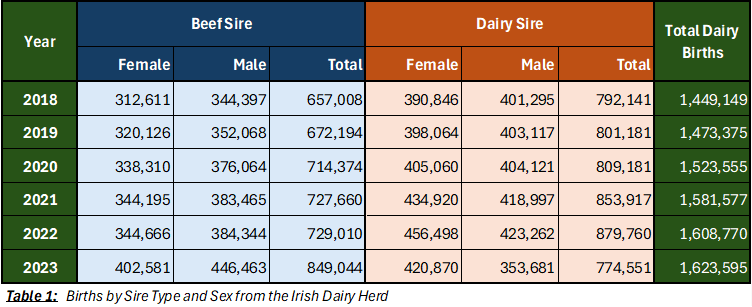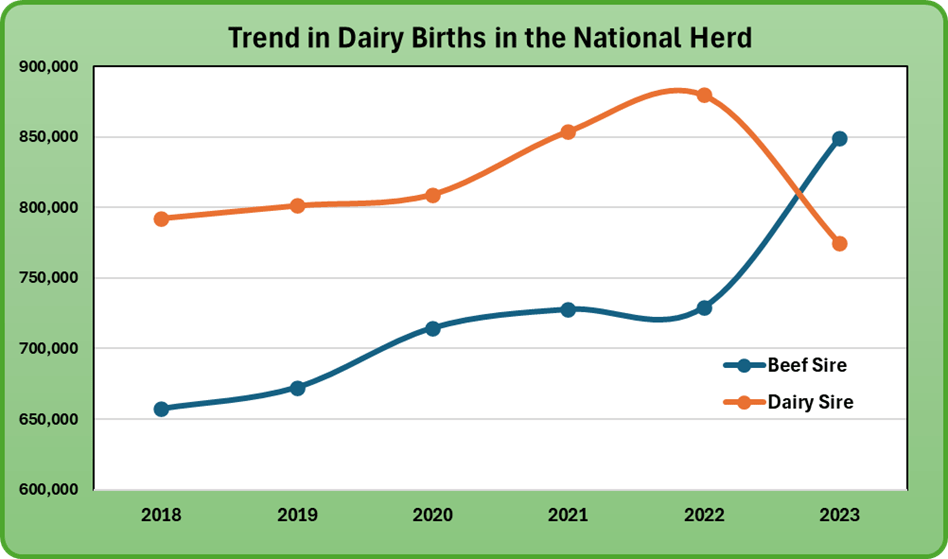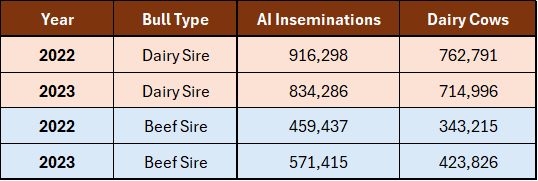There has been a big shift towards dairy farmers opting to use beef in the dairy herd from the start of the breeding season as opposed to the end. Looking at the 2023 data in Table 1. below, we see that there are about 120,000 more beef sired calves in 2023 (i.e. 849,044) than there were in 2022 (i.e. 729,010). There are also about 67,000 fewer dairy male calves born in 2023 compared with dairy females (i.e. 420,870 females compared to 353,681 males or 54% female V’s 46% male).
The use of sexed semen has played an very important role in this move and early indications are showing an even better picture for 2024, with only 41% of dairy calves being male.
The graph below, clearly shows how dairy farmers have embraced the messages of only breeding from their highest EBI females and using high Dairy Beef Index (DBI) sires on the lower EBI cows from the start of the breeding season.
The trend is likely to continue this year. If we look at AI inseminations on dairy cows in 2022 and 2023, there are about 80,000 less dairy serves (i.e. 916k back to 834k) which translates to less dairy calves on the ground this Spring.
In summary, dairy farmers are using the latest technologies, namely Sexed Semen, EBI and DBI, to help breed more profitable replacements while at the same time increasing the quantity and quality of beef from the dairy herd.



